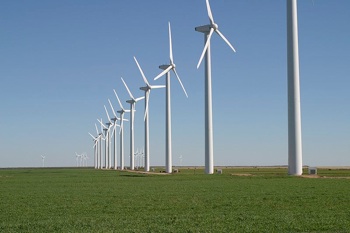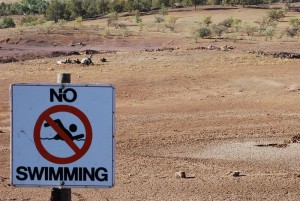Below is an article written by Louis about the recent trend in clean energy crowdfunding. It was first published by Green Tech Media and the original article can be found here.
For clean energy investors, Title III of the JOBS Act could change the game.
Prior to its implementation, investing in clean energy startups or small-scale utility projects has been a pursuit reserved mainly for venture capital and private equity firms investing on behalf of their institutional and high-net-worth clients. The barrier to entry into these funds is high, with six- to seven-figure minimum buy-ins typically the norm. But in a post-JOBS Act America, we’re entering a crowdfunding-inspired era where barriers to entry are crumbling.
Take Mosaic, for example, where an investor with as little as $25 and an internet connection can fund a portion of a solar project via an online investment platform.
Sounds great, right? Well, it is. But as with any other investment opportunity, putting money to work in crowdsourced clean energy projects comes with risks. And as crowdfunding gains in popularity and scope, these risks may be glossed over or simply ignored by an enthusiastic investing public eager to put their money where their eco-conscious mouth is.
So what are the risks, exactly?
Let’s take a closer look at Mosaic — not because its offering is especially risky (compared to other crowdsourced investment opportunities, it’s not), but because it’s currently the poster child for this new business model.
In a nutshell, Mosaic helps investors of any size lend money to small-scale solar projects in need of capital. As a result, the solar projects get financing, Mosaic is paid a fee, and investors earn interest on their loan. Think of it as Kickstarter meets Kiva for solar project financing.
Here’s Mosaic’s pitch, in the company’s own words, taken directly from its website: “Mosaic connects investors seeking steady, reliable returns to high-quality solar projects. To date, over $5.6 million has been invested through Mosaic and investors have received 100% on-time payments.”
Below this statement is a list of Mosaic’s projects (all of which have been fully funded) showing annual payments of 4.5 percent to 5.5 percent. This number is net of Mosaic’s annual 1 percent management fee on loans that mature in five to twelve years.
Steady and reliable returns of 4.5 percent or more per year on your investment, plus pride in knowing your money is supporting a clean energy project. Sounds terrific. Everybody wins.
So what’s the catch? Is there a catch?
To answer this question, we have to take a closer look at Mosaic’s prospectus, a densely worded document that lays out the deal terms and accompanying risk factors in explicit detail. After all, the language found on the website is meant to sell prospective investors on Mosaic, not scare them away.
So, onto the prospectus, where on page 2 of the offering memorandum, in capital letters, we get this: “These are speculative securities. Investment in the notes involves significant risk. You should purchase these securities only if you can afford a complete loss of your investment.”
Speculative securities; significant risk; complete loss of your investment. Not quite the sunny language we found on the website. So what exactly are investors getting themselves into here?
It turns out these loans are not made directly to the solar project. Rather, they are funneled through an intermediary (Mosaic), which deploys capital to the projects on behalf of investors. So when an investor lends money to one of these projects, what they’re actually getting is an unsecured note issued by Solar Mosaic LLC, which is meant to “mirror the terms of the corresponding loan.” This is an important distinction, as certain bondholder rights are lost in this structure.
This leads us to the most important risk factor for investors to consider.
Default risk
What’s the risk that the issuer will fail and be unable to make interest payments or pay back your principal? Unlike bank CDs (insured by the FDIC), Treasury bonds (backed by the full faith and credit of the U.S. federal government), or municipal bonds (which often carry third-party insurance), Mosaic notes are uninsured, unsecured corporate bonds.
The repayment of principal with interest hinges on the success of the solar project and its ability to generate the necessary cash flow. Because of the way these notes are structured, investors will have two entities to worry about: the borrower (solar project) and the issuer (Mosaic). If the solar project fails, the investor will not receive interest payments and risks losing the invested principal. If Mosaic goes bankrupt (even if the solar project is successful), the investor also may not receive interest payments and risks losing the principal.
Oh, and by the way, if things do go south, the investor “will not have any recourse to the borrower under the loan.” If the solar project fails, you’re relying on Mosaic to recoup your principal through litigation, and the investor “will not have any security interest in any of MSI’s (Mosaic Solar Investments) assets.” That means if Mosaic goes belly up, don’t expect its other assets to cover your losses.
Since the performance of each note is tied directly to the success of the individual solar project, the next factor to consider is credit risk.
Credit risk
How can you quantify which projects are in the best position to repay the loan? Remember, if the project fails, it’s the investor’s capital at risk, not Mosaic’s (although the company’s reputation would likely take a hit). Most publicly traded bonds carry a credit rating from one or more of the major ratings agencies like Moody’s, S&P or Fitch. While these ratings should not be considered gospel (just ask anyone invested in “AAA”-rated mortgage-backed securities in 2008), they can provide a useful marker to help investors gauge the default risk of the borrower.
While Mosaic is working with Standard & Poor’s via truSolar to develop a scoring system for solar bonds, there currently isn’t any third-party analysis of the credit quality of the borrowers. Investors can conduct some limited due diligence on their own, but most will be relying on the judgment of Mosaic’s underwriting team, which have only been at this since 2012. So while there may have been 100 percent on-time payments to date, this is based on a very limited track record.
Since the notes are only available on Mosaic’s platform, another factor to consider is liquidity.
Liquidity risk
What happens if you need access to your principal before the loan matures? With publicly traded bonds (treasuries, corporates, municipals), there’s a secondary market where investors can sell their bonds prior to maturity. With Mosaic’s notes, there is no secondary market. Also, there isn’t a mechanism in place for investors to redeem their notes prior to maturity. So if your note matures in twelve years, your money will be tied up for the duration. Think of it as a bank CD: you’ll be able to withdraw interest payments, but your principal is illiquid.
This lack of liquidity on a longer-term bond can expose investors to interest rate risk.
Interest rate risk
Right now, we’re living in a time of historically low interest rates. As anyone who holds money in a checking or savings account can tell you, yields on cash are virtually nonexistent. This is a result of the federal funds rate (the rate at which banks borrow money from each other) being set at essentially 0 percent. This impacts rates across all loans, keeping them low — until rates go up again.
And make no mistake, rates will rise. It’s not a question of if, but when and by how much. A twelve-year Mosaic note paying 5.5 percent per year may look great today, but if interest rates are substantially higher a few years from now, you’ll be stuck in an illiquid investment paying below-market rates.
In addition, there are a few other risks to consider.
Technology risk
Will the solar technology being used in this project still be viable twelve years from now? What happens if there’s a major breakthrough in panel performance that causes the panels used in your investment to become obsolete? Or what happens to the warranty on the solar panels if the manufacturer goes out of business?
Catastrophe risk
With climate change impacting weather patterns, what happens if a natural disaster (hurricane, tornado, flood) wipes out the solar farm you’re invested in? Mosaic requires borrowers to carry property insurance, but how would the lack of cash flow during repair work impact interest payments?
Do all these risk factors mean investors shouldn’t put money to work into Mosaic or other crowdsourced clean energy projects? Not necessarily. In fact, these types of investments can make a nice addition to a diversified portfolio. And Mosaic deserves a lot of credit for successfully building out this business model and proving it’s viable, not to mention wildly popular amongst clean energy investors.
However, just like any other investment opportunity, investors need to carefully consider all the risks involved prior to putting their money to work.

 Dear Friends,
Dear Friends, Todd Woody writes in the New York Times on
Todd Woody writes in the New York Times on